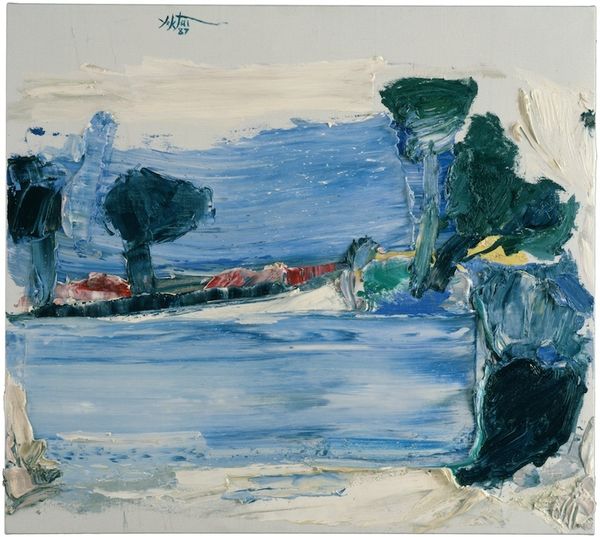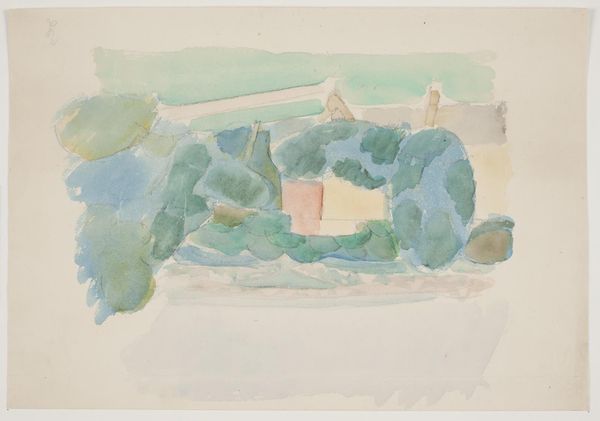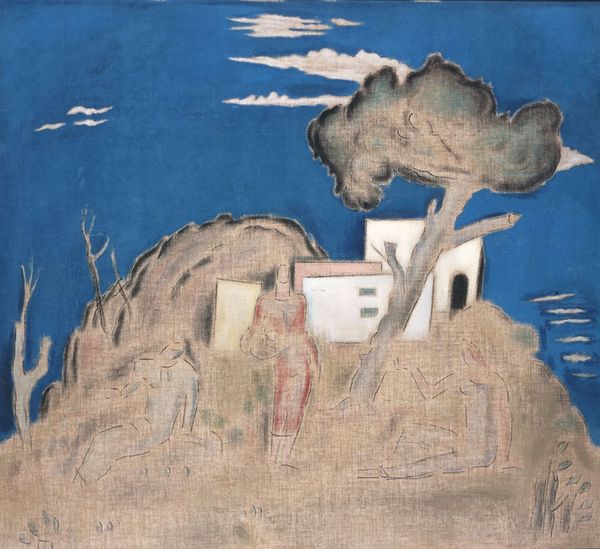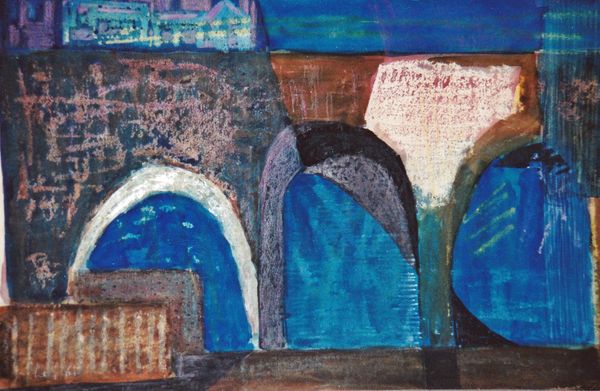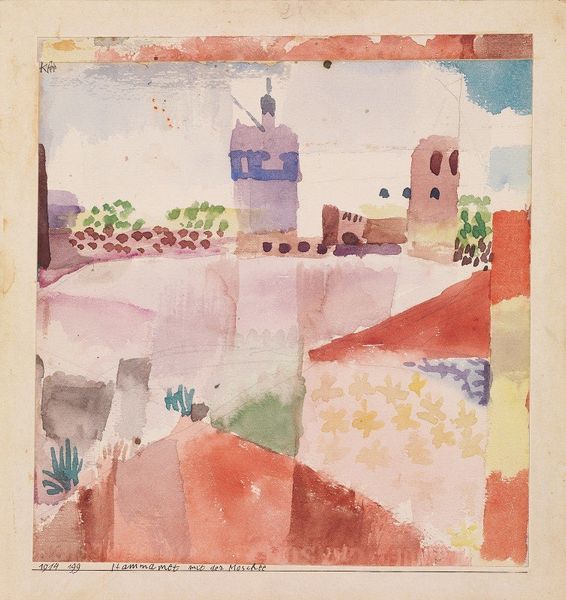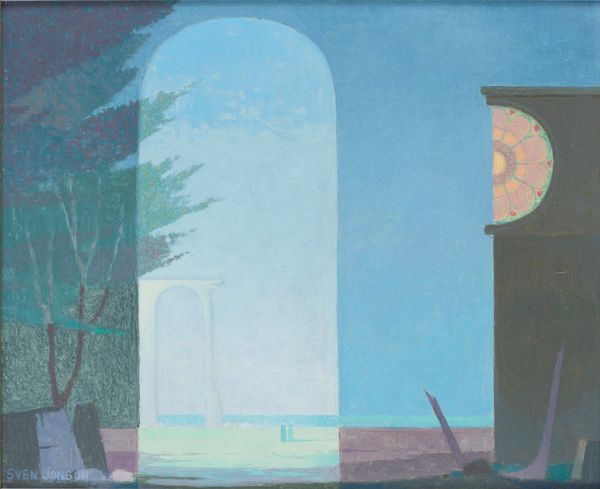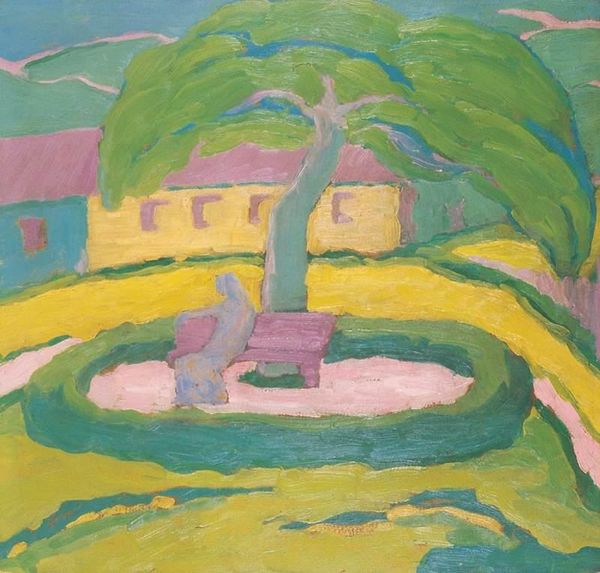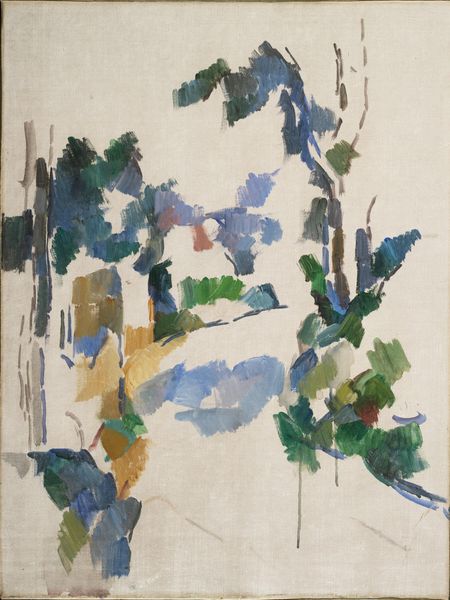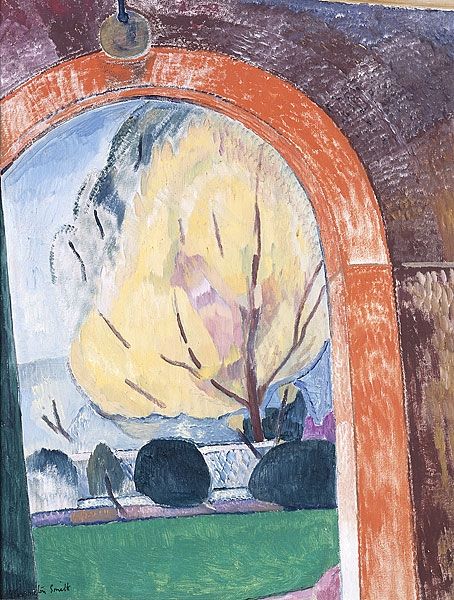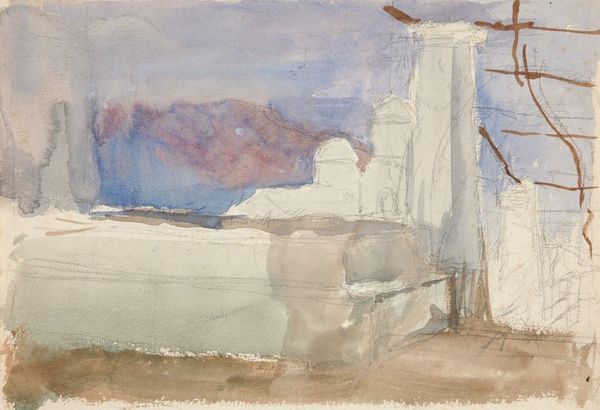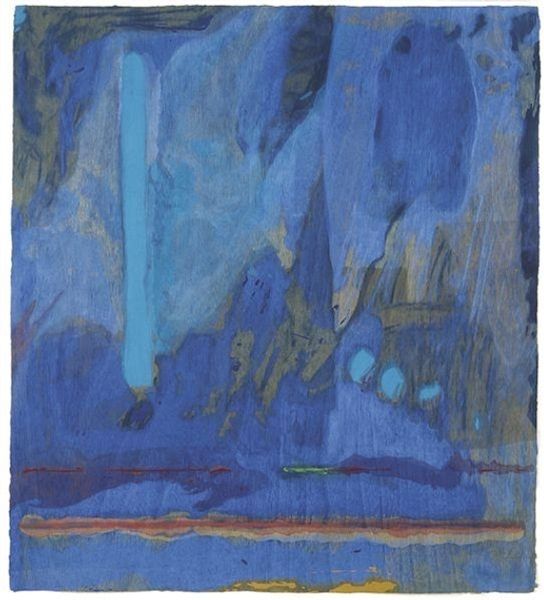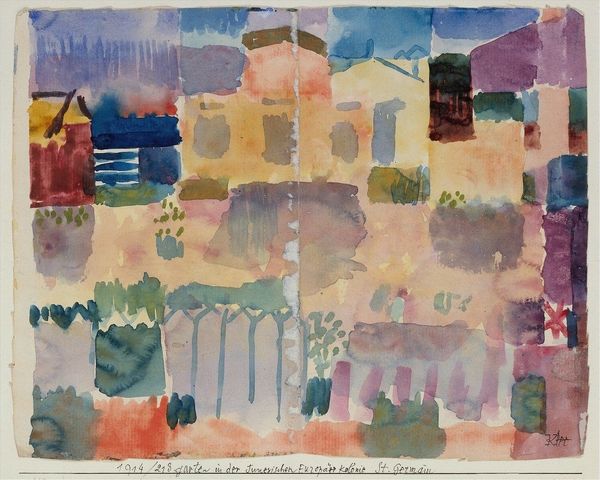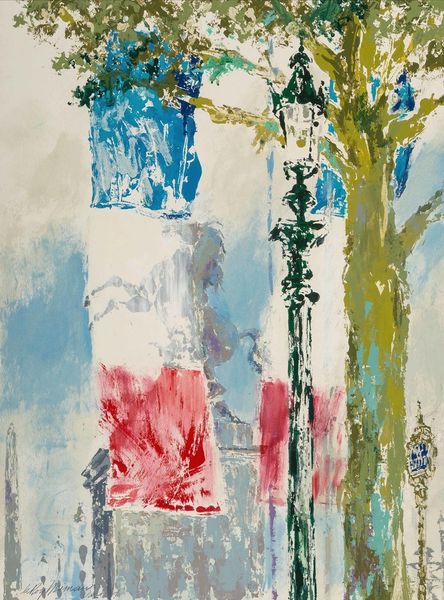
Dimensions: 36 x 39.5 cm
Copyright: Public domain US
Editor: So this is Alexis Gritchenko's "Constantinople Skyline" from 1921, using watercolor and maybe some oil on what looks like a smaller canvas. I’m struck by how the bright blues contrast with the rough texture. It’s almost aggressively joyful. What’s your take on it? Curator: As a materialist, I see Gritchenko engaging with the very tangible realities of post-war reconstruction through this piece. He’s choosing relatively inexpensive and accessible media: watercolors. Why use these common materials to depict such an iconic city? Editor: Hmm, so maybe not just joy, but also… practicality? He’s documenting, but with whatever's available? Curator: Exactly. Think about the labor involved in creating this work. Watercolor allows for speed, mass production. This wasn’t a commission for the elite; perhaps it was destined for a wider audience. Do you think that informs how we should interpret the stylistic choices – the expressionistic and impressionistic styles? Editor: I hadn’t considered the accessibility aspect, so I didn't see it as something intended for mass appeal due to its non-realist expression. It makes you wonder how that impacts its cultural value and message? It challenges traditional artistic boundaries. Curator: Precisely. The social context and the available resources shaped its creation and its reception. We need to ask: how does its value shift with its potential audience? Editor: This gives me a lot to consider. It goes way beyond just seeing a pretty picture. Curator: Absolutely, by considering the materials and the social dynamics behind art, we get a much fuller, and more truthful, view of history.
Comments
No comments
Be the first to comment and join the conversation on the ultimate creative platform.
